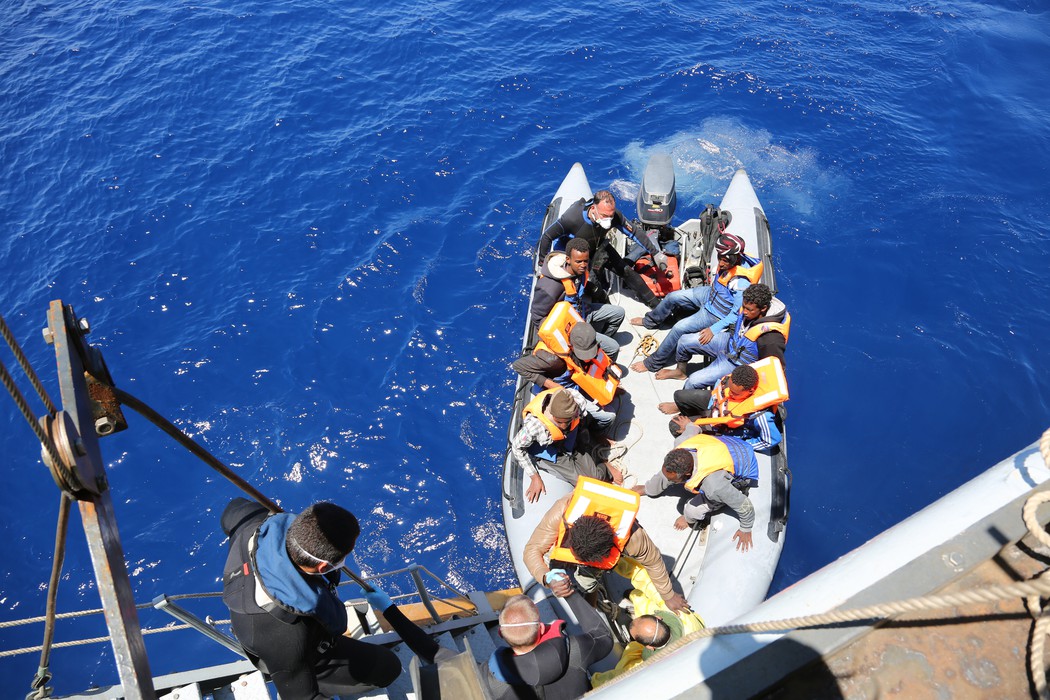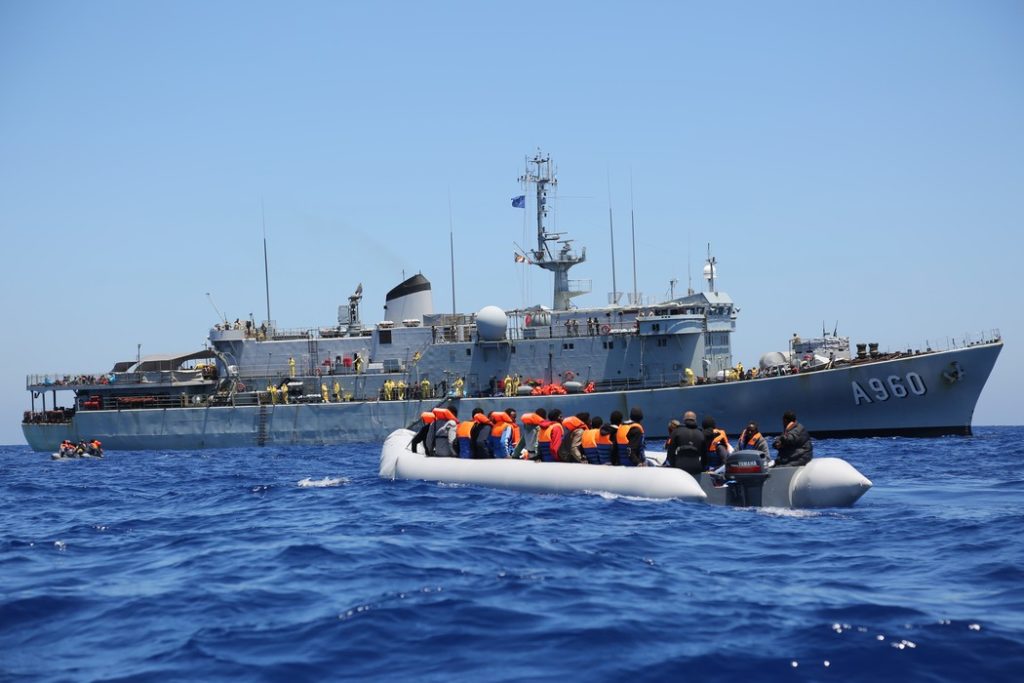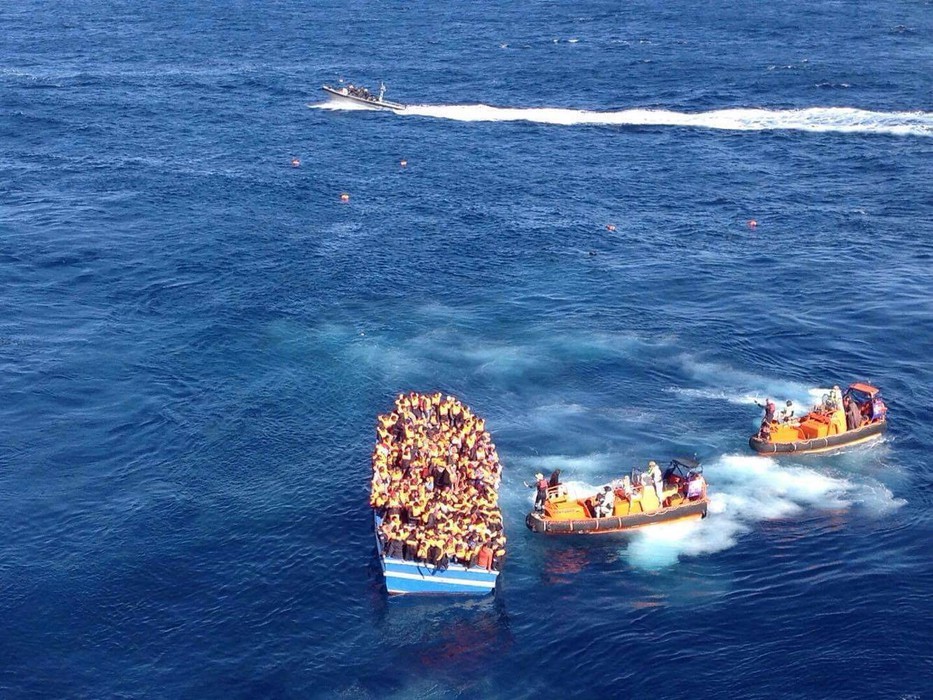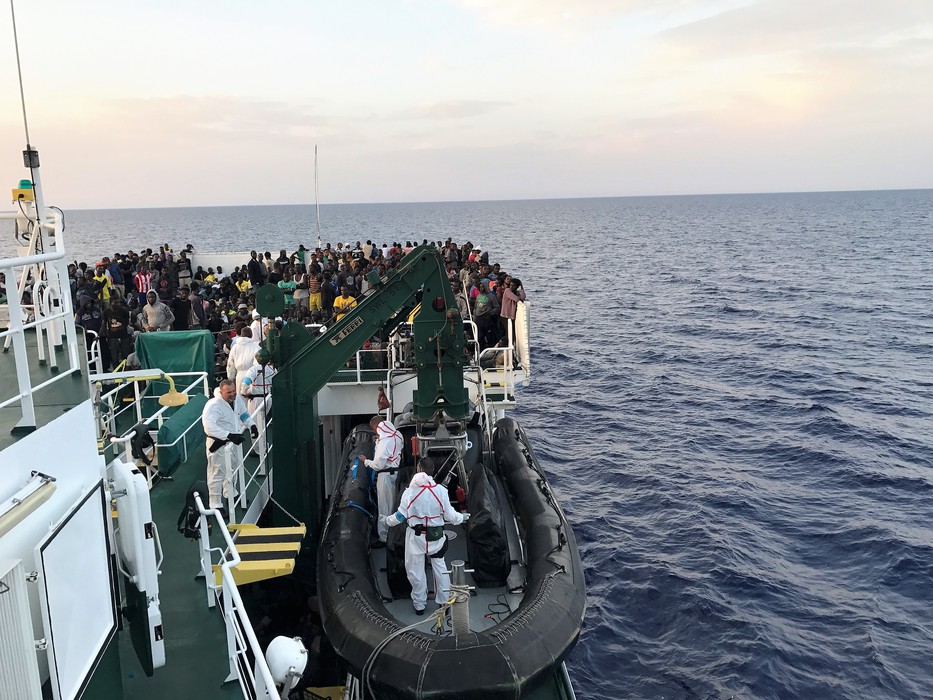
Accessing a Fair Asylum Procedure: Failures at the external borders of the European Union
By Elspeth Guild and Nicolette Busuttil, Queen Mary University of London. Photo: Frontex
Just as Frontex and national border guards are intensifying their coordination of external border controls, it is time to investigate how, whether and under what conditions, national fundamental and human rights bodies can cooperate and coordinate to provide the necessary counterbalance to the coordination of border controls. Ending the seemingly endless litany of deaths and human rights abuses occurring in or around external border operations of EU and Member State agencies (or through failure to act) is the only principled way forward that is in line with States’ commitments to respect, promote, and fulfill the human rights of migrants and refugees.
There is currently a political and humanitarian crisis in the exercise of external border controls on persons seeking to enter the EU. The allegations of human rights violations in the management of these external borders have accumulated and intensified since Autumn of 2020 and continue to have very substantial repercussions across Europe and beyond.
While there are numerous legal challenges currently outstanding and further investigative journalism is providing more information on specific circumstances, proposals on how to achieve effective, fundamental rights consistent and efficient border controls in Europe are scarce.
While the vast majority of border crossings into the EU are safe, orderly and regular, to use the terminology of the UN’s Marrakesh Compact adopted in 2018 (enthusiastically supported by the EU and Member States with limited exceptions), when things go wrong, it seems they go catastrophically wrong.
Frontex’s Annual Risk Assessments include a statistical annex which indicates that there are annually more than 300 million external border crossings into the EU, of which less than 0.005% are irregular. Yet, the loss of life among people seeking to cross the EU’s external border is, according to IOM, among the highest in the world. Clearly, there is something profoundly wrong with how the EU carries out their border controls.
EU border guards take part in unlawful pushbacks
Crossing a border to escape the country of persecution is an essential element to being recognised as a refugee (Article 1A Refugee Convention 1951). The Refugee Compact, also adopted by the UN General Assembly in December 2018, and the blueprint for implementation of the international community’s obligations to provide protection, is grounded in the international refugee protection regime, centred on the cardinal principle of non-refoulement, and at the core of which is the Refugee Convention.

When someone flees across an international border and arrives within the jurisdiction of a state where he or she seeks protection, the non-refoulement duty prohibits the state from sending the person back to a country where his or her life or liberty would be at risk. The state must examine the claim. This photo is taken from the Frontex’ Triton Operation in 2015.
Investigative journalism reports have provided compelling evidence of the failure of some EU border guards to uphold the non-refoulement duty. Instead, they are alleged to have taken part in unlawful pushbacks of little boats in the Eastern Mediterranean, preventing the people on board from arriving within the jurisdiction of EU Member States and incidentally also preventing them from making asylum claims.
A number of investigations have been opened into the allegations, including those by the European Parliament and the European Ombudsman, which are yet to be concluded.
300 drownings in the first four months of 2021
While border controls on persons entering Europe are normally an administrative procedure that takes no more than 12 seconds on average (Frontex 2014), in the first four months of 2021, at least 300 people have drowned crossing the Mediterranean towards the EU coasts (IOM 2021). It is not only imperative to understand what is going wrong but also to put in place realistic systems that effectively address the shortcomings in border control that are resulting in these deaths.
In December 2018, the UN adopted the Global Compact for Refugees and the Marrakesh Compact – the blueprint for the world to achieve refugee protection in the context of safe, orderly and regular migration.
This objective was strongly supported by the EU institutions and almost all Member States. One of the guiding principles of the Compacts is that border controls and migration are shared responsibilities among states:
“We acknowledge our shared responsibilities to one another as Member States of the United Nations to address each other’s needs and concerns over migration, and an overarching obligation to respect, protect and fulfil the human rights of all migrants, regardless of their migration status, while promoting the security and prosperity of all our communities.” (para 11 Marrakesh Compact).

As many as 300 people headed for the EU lost their lives at sea between January and April in 2021. The International Migration Organization (IOM) report that 337 children have died while migrating in Africa between 2014–2018, 200 of them died as a result of drowning in the Mediterranean sea. However, over 70 percent of people whose deaths were reported in the Central Mediterranean between 2014 and 2018 were never found. This photo is taken from Frontex Triton Operation in 2017.
The EU has engaged strongly with the implementation of the Compacts, fully endorsing their objectives. In the EU Commission and External Action Service’s joint submission to the November 2020 IOM-led regional review of the implementation of the Marrakesh Compact, the institutions took the opportunity to reaffirm their commitment to multilateral approaches to border and migration challenges.
The submission begins by affirming that “Today’s world requires effective multilateral approaches based on solidarity, human rights and a rules-based international order.”
We fully endorse this approach and agree that it provides a critical entry point to finding new ways of delivering on fundamental and human rights commitments within a rule of law framework in all external border control activities of the EU and its Member States.
A patchwork of responsibilities and a resource problem
The current crisis of confidence regarding the compatibility of EU external border controls with the two Compacts needs to be addressed not only by investigations into what has gone wrong but by finding ways to ensure that EU border controls are fully compliant with the EU’s and Member States’ international refugee law and human rights commitments.
This means effective, independent and timely monitoring of all external border operations, in particular where there are situations of refugee arrivals at stake.
Yet, at the moment, there is a patchwork of responsibilities, competences and activities by these institutions as regards the delivery of fundamental and human rights at EU external borders. At the supranational level, this includes the involvement of EU entities and those of the Council of Europe and the UN system.

Unlike the increasingly coordinated and cooperative framework of external border control bodies, led by Frontex and engaging all border guards in the EU, those charged with ensuring the delivery of fundamental and human rights, including at external borders, are fragmented. Photo taken from Frontex’ Triton Operation in 2017.
At the EU level, this is seen through the opening of the investigations mentioned above and the role of the Court of Justice of the European Union. Within the Council of Europe system, the European Court on Human Rights, the Parliamentary Assembly (PACE), and the Commissioner for Human Rights are among those involved.
Within the UN system, UNHCR, the Commissioner for Human Rights, and the Special Representative for International Migration all play a role in the oversight of the delivery of fundamental rights at the EU external border.
All EU Member States have public institutions which are responsible for ensuring the comprehensive, effective, and good-faith delivery of fundamental and human rights to all persons within the jurisdiction.
These include national human rights institutions, ombudspersons, and national preventive mechanisms, which operate in line with internationally adopted standards and legal mandates that ensure their independence.
The knowledge and experience of these institutions in delivering EU fundamental rights and European human rights is critical to the task at hand: ensuring safe, orderly and regular border crossing fully compliant with human rights within a rule of law framework.
Yet, even though national institutions have considerable experience in human rights monitoring, they still face considerable challenges, not least due to resource limitations.
Cooperation is needed to counterbalance an increasingly coordinated border control
This work is complemented by that of non-governmental organisations and investigative journalists, who play a crucial role in monitoring and documenting activities at the border.
Yet, although the work done by civil society actors is invaluable, as seen through how most publicly available documentation relating to these human rights violations is a result of their consistent efforts, their status is not formalised, and they do not conduct oversight in any official capacity. They are also beholden to funding constraints.
Just as Frontex and national border guards are intensifying their coordination of external border controls, it is time to investigate how, whether and under what conditions, national fundamental and human rights bodies can cooperate and coordinate to provide the necessary counterbalance to the coordination of border controls.
Ending the seemingly endless litany of deaths and human rights abuses occurring in or around external border operations of EU and Member State agencies (or through failure to act) is the only principled way forward that is in line with States’ commitments to respect, promote, and fulfil the human rights of migrants and refugees.
It is also the only response in line with the recognition, asserted through the Global Compacts, of their shared responsibility in the management of borders that fully respect human rights obligations. Only timely, independent, and effective monitoring can provide the solution.
